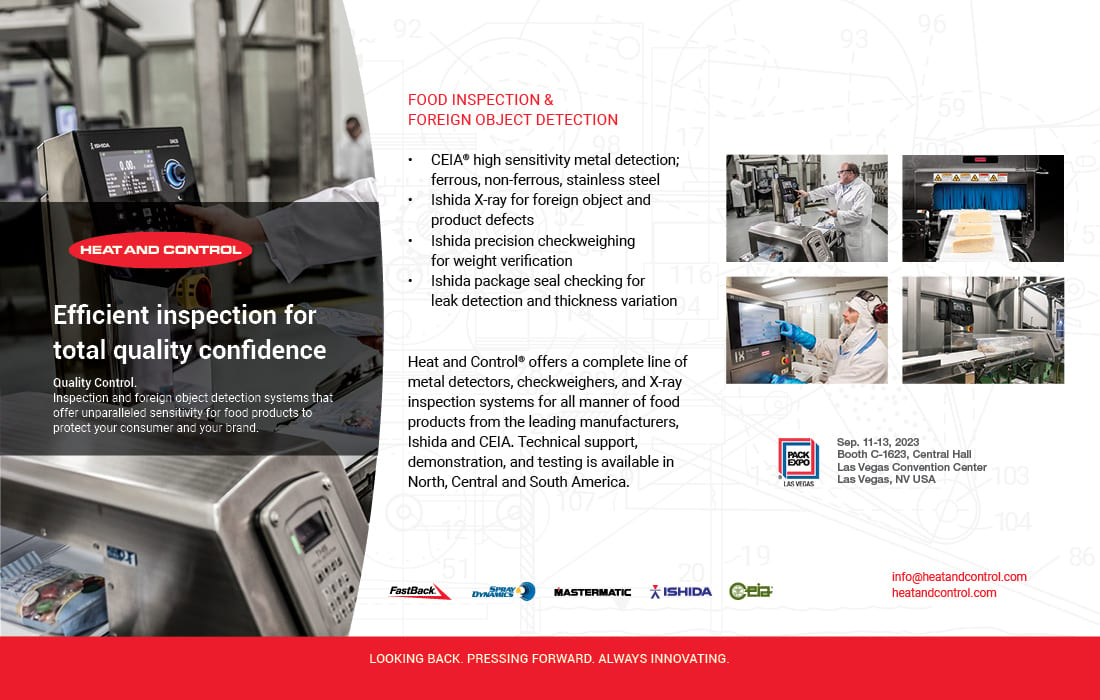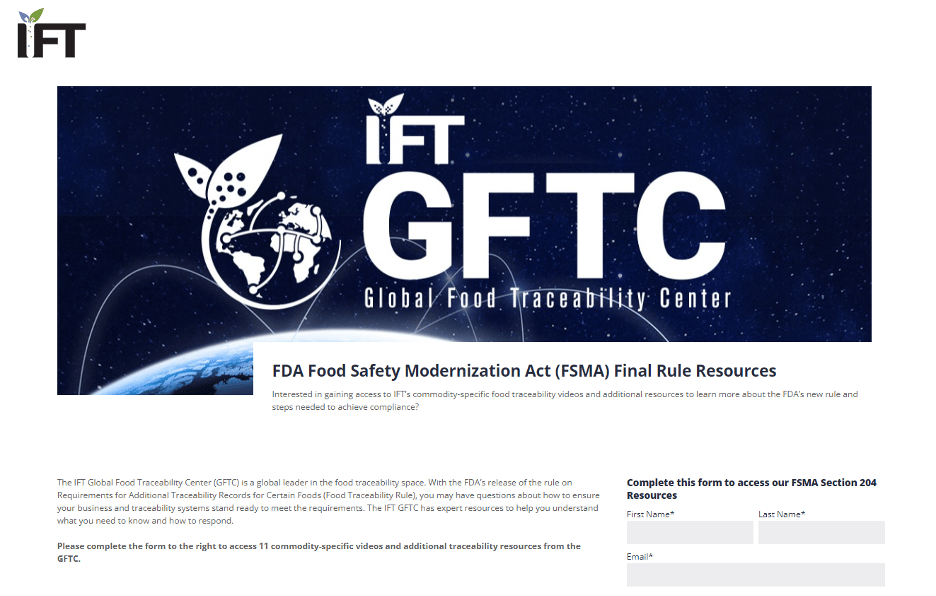
SCROLL
DOWN
The first global report on the food safety aspects of cell-based foods has been published by the Food and Agriculture Organization of the United Nations (FAO) and the World Health Organization (WHO). The report is intended to provide a solid scientific basis to begin establishing regulatory frameworks and effective systems to ensure the safety of these alternative proteins. Some countries, such as Singapore and the U.S., have already made steps toward introducing cell-based foods to the market. With its publication, FAO/WHO sought to identify the potential food safety implications before products become widely available to consumers.
The report, titled, Food Safety Aspects of Cell-Based Food, includes a synthesis of information on terminology; the principles of production processes; an overview of the global regulatory landscape; and case studies from Israel, Qatar, and Singapore. The results of an FAO-led expert consultation where food safety hazard identification was conducted are also included. The scope of the hazard identification covered four stages of the cell-based food production process: cell sourcing, cell growth and production, cell harvesting, and food processing. While generalizations can be made about the cell-based foods production process, it may be appropriate to conduct food safety assessments on a case-by-case basis, as each product may use different cell sources, scaffolds/microcarriers, culture media compositions, cultivation conditions, and reactor designs.
The report also notes that, in most countries, cell-based foods can be regulated within existing novel food frameworks. For example, Singapore has already made amendments to its novel food regulations to specifically include cultured meat, while the U.S. has addressed labeling and safety requirements for food made from the cultured cells of livestock and poultry through a formal agreement between the U.S. Food and Drug Administration (FDA) and the U.S. Department of Agriculture (USDA). Moreover, USDA has stated its intent to draw up regulations on the labeling of meat and poultry products derived from animal cells.

FAO, WHO Publish Report on Cell-Based Food Safety
FDA Seeks to Strengthen U.S. Infant Formula Market
Image credit: Dr_Microbe/iStock / Getty Images Plus via Getty Images
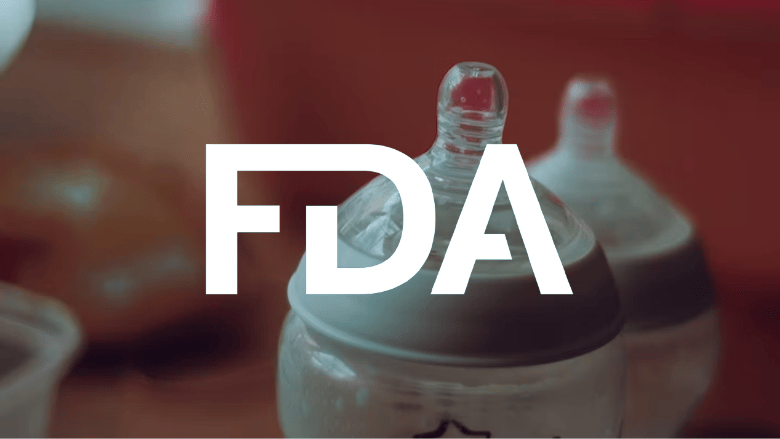
On March 28, FDA released an Immediate National Strategy to Increase the Resiliency of the U.S. Infant Formula Market. The strategy followed a months-long infant formula shortage beginning in February 2022, sparked by insanitary conditions at one of the nation's largest infant formula facilities, leading to a significant voluntary recall and production shutdown.
As directed by U.S. Congress in the Food and Drug Omnibus Reform Act of 2022, the national strategy describes immediate actions FDA has taken to address the infant formula shortage, and details the agency's plans for improving the resiliency of the infant formula supply, while noting multiple issues beyond the purview of the FDA. It also traces the events that led up to and followed the voluntary recall of infant formula by Abbott Nutrition in February 2022, the temporary pause in production at the facility in Sturgis, Michigan, and pantry loading that peaked in May 2022.
Key elements of the immediate strategy include:
- Ensuring industry is aware of requirements to develop and implement redundancy risk management plans
- Continuing to enhance inspections of infant formula manufacturers
- Expediting review of premarket submissions for new infant formula products to mitigate or prevent shortages
- Continuing to monitor the infant formula supply and developing a forecasting model to enable FDA to prepare for and mitigate future supply disruptions
- Engaging with U.S. government partners who play a role in mitigating other factors that may influence the infant formula supply, such as tariffs and market concentration
- Engaging with USDA to support efforts to build resiliency within its Special Supplemental Nutrition Program for Women, Infants, and Children (WIC)
- Continuing to advance the agency's Strategy to Help Prevent Cronobacter sakazakii Illnesses Associated with Consumption of Powdered Infant Formula
- Improving the agency's consumer education materials relating to infant formula
- Enhancing and leveraging FDA's partnerships with health care providers and professionals to further expand the agency's consumer education program.
With input from the National Academy of Science, Engineering and Medicine (NASEM), the strategy represents a first step toward issuing a long-term, national strategy in 2024 to improve preparedness against infant formula shortages by outlining methods to improve information-sharing, recommending measures for protecting the integrity of the infant formula supply chain, and preventing contamination.
A pre-publication draft of a final rule from the U.S. Environmental Protection Agency (EPA) has revealed EPA's intent to regulate several types of per- and polyfluoroalkyl substances (PFAS) as contaminants, setting new maximum levels for six PFAS in drinking water. In March 2021, EPA issued a determination to regulate perfluorooctanoic acid (PFOA) and perfluorooctane sulfonic acid (PFOS) as contaminants under the Safe Drinking Water Act (SDWA). EPA is now issuing a determination to regulate perfluorohexane sulfonic acid (PFHxS), hexafluoropropylene oxide dimer acid (HFPO-DA) and ammonium salt (also known as a GenX chemicals), perfluorononanoic acid (PFNA), perfluorobutane sulfonic acid (PFBS), and mixtures of these PFAS as contaminants under SDWA. The agency is also proposing a National Primary Drinking Water Regulation (NPDWR) and health-based Maximum Contaminant Level Goals (MCLG) for the four newly regulated PFAS and their mixtures, as well as for PFOA and PFOS.
EPA is proposing to set the MCLG for PFOA and PFOS at zero. Considering feasibility, including currently available analytical methods to measure and treat these chemicals in drinking water, EPA is proposing individual MCLs of 4.0 nanograms per liter (ng/L) or parts per trillion (ppt) for PFOA and PFOS. The agency is proposing to use a Hazard Index (HI) approach to protecting public health from mixtures of PFHxS, HFPODA and its ammonium salt, PFNA, and PFBS because of their known and additive toxic effects, and their occurrence and likely co-occurrence in drinking water. EPA is proposing an HI of 1.0 as the MCLGs for the four PFAS, as well as any mixture containing one or more of the chemicals, because it represents a level at which no known or anticipated adverse effects on the health of persons is expected to occur and allows for an adequate margin of safety. EPA has determined it is also feasible to set the MCLs mixture containing one or more of PFHxS, HFPO-DA and its ammonium salt, PFNA, and PFBS for these four PFAS as an HI of 1.0.

EPA to Regulate Certain PFAS as Contaminants
FDA Releases New Food Fraud Webpage
The U.S. Food and Drug Administration (FDA) has released a new website on economically motivated adulteration (EMA), including food fraud. The purpose of the website is to keep businesses and consumers informed on the latest food fraud developments.
The website includes links on how to report food fraud; examples of food adulteration; how food fraud is detected and monitored; enforcement and legal consequences, such as recalls, seizures, and import refusals; guidance documents to assist manufacturers and importers; and a list of import alerts.
EMA occurs when "someone intentionally leaves out, takes out, or substitutes a valuable ingredient or part of a food," according to FDA. EMA also occurs when a substance is added to a food to make it appear better or of greater value.
Food fraud is a common type of EMA that FDA investigates, but EMA also occurs with other products, including animal food and cosmetics. Some types of EMA are also misbranding violations. Estimating how frequently food fraud occurs or its exact economic impact can be challenging because food fraud is designed to avoid detection. Outside estimates by experts have found that food fraud affects 1 percent of the global food industry at a cost of approximately $10–$15 billion per year, although more recent expert estimates peg the cost as high as $40 billion per year.
Food fraud can also lead to major health issues and even death. Some examples include lead poisoning from adulterated spices and allergic reactions to a hidden or substituted ingredient that contains a small amount of just one food allergen.
Click here to visit FDA’s new EMA website.
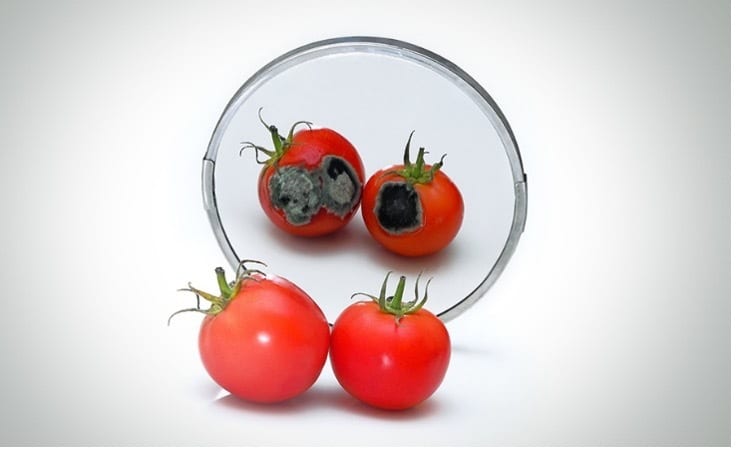
Image credit: Dr_Microbe/iStock / Getty Images Plus via Getty Images
The majority of food allergen recalls are caused by preventable labeling errors, according to a recent analysis of recall data for FDA-regulated products. Additionally, milk remains the top major food allergen implicated in major food allergen recalls. The study included recall data for fiscal years 2013–2019, during which time there were 1,471 food allergen and gluten recalls. The data was collected from FDA's Recall Enterprise System (RES). Of the 1,471 total recalls, 1,415 recalls were due to major food allergens, 34 recalls were due to gluten-free labeling violations, and 23 recalls involved other allergens. In general, recalls due to major food allergens increased during the study period, with a peak incidence rate in fiscal year 2017.
Major food allergen recalls were classified as 51.2 percent Class 1, 45.5 percent Class 2, and 3.3 percent Class 3. A majority of the recalls involved one allergen (78.8 percent). Milk was the most common major food allergen involved in major food allergen recalls (37.5 percent), followed by soy (22.5 percent) and tree nuts (21.6 percent). Almond, anchovy, and shrimp were the most common allergens recalled within the major food allergen groups of tree nuts, fish, and crustacean shellfish, respectively.
About 97 percent of major food allergen recalls involved one product category. Bakery items were the most commonly implicated food category in recalls (31.5 percent), followed by snack foods (12.1 percent), candy (10 percent), dressing (8 percent), and dairy (7.9 percent). Labeling-associated errors accounted for 71.1 percent of the 914 major food allergen recalls with known root causes. Another 23.4 percent of the recalls with known root causes were caused by cross-contamination.
The 2015 "Current Good Manufacturing Practice, Hazard Analysis, and Risk-Based Preventive Controls for Human Food" rule (21 Code of Federal Regulations (CFR) Part 117) defines preventive allergen controls including labeling requirements. In comparison to 21 CFR 117, 76.8 percent of major food allergen recalls with a known root cause were likely due to inadequate label controls, the study found. Specifically, of the 893 recalls with labeling-related root causes, adequate label content controls could have prevented 63.5 percent of recalls, while adequate label management controls could have prevented the other 36.5 percent of recalls. The findings suggest that food manufacturers should pay close attention to ensure adequate allergen label controls are in place to protect public safety and prevent food allergen recalls.

Most Major Allergen Recalls Caused by Labeling Errors
Replacement per- and polyfluoroalkyl substances (PFAS) heralded as "safe" for use in food packaging may actually break down into toxic PFAS that leach into foods and the environment, suggests a study published in Environmental Science and Technology Letters. Due to the known exposure risks of using smaller PFAS molecules like perfluorooctanoic acid (PFOA) and perfluorooctanesulfonic acid (PFOS) in food-contact materials, many companies have pivoted to using larger polymeric PFAS to make wrappers, bowls, and other fast-food packaging water- and grease-repellant. These polymeric PFAS are promoted as "safer" alternatives that are inert and too heavy to escape from products. However, the present study provides the first evidence that polymeric PFAS used in food packaging break down into smaller molecules that are still harmful and can leach into food and the environment.
The researchers tested 42 paper-based wrappers and bowls collected from fast food restaurants in Toronto. A PFAS that is known to be toxic—6:2 fluorotelomer alcohol (6:2 FTOH)—was the most abundant compound detected in the samples. The polymeric PFAS present in the samples can transform into 6:2 FTOH compound, thereby exposing consumers. Critically, the researchers found that the concentration of PFAS declined by up to 85 percent after storing the products for two years under normal conditions (at room temperature and in the dark). Much of these losses were consistent with the breakdown of the polymeric PFAS added to the fast-food packaging. These results contradict claims that polymeric PFAS are immobile and do not create exposure risks.
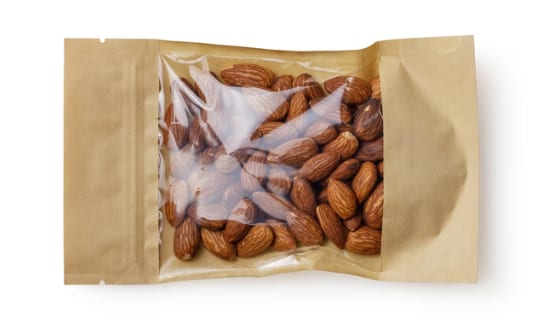
"Safer" PFAS Types Used in Food Packaging Still Hazardous
FDA has issued a letter to developers and manufacturers of new plant varieties used for food. The letter reminds these companies of the relevant legal requirements if they intend to transfer genes for proteins that are food allergens (including major food allergens) into new plant varieties. Foods derived from new plant varieties developed using genetic engineering or genome editing are often referred to as "bioengineered." An example of gene transfer of allergen proteins into novel plants would be adding the gene for an allergenic animal protein to a new plant variety to provide a non-animal source of the protein to use as an ingredient in another food.
FDA is not aware of any foods currently in the U.S. market from these types of new plant varieties, but the agency is aware of research and development in the area. Since adverse reactions to food allergens can be severe and life-threatening, including when the allergen is present at low levels, FDA found it appropriate to reach out to developers and manufacturers while such plant varieties are still in early research and development stages. Since FDA published its 1992 policy on food from new plant varieties, the agency is aware of only one case in which a company transferred a gene from a major food allergen into a crop plant—a gene for a Brazil nut protein into a soy variety to improve its nutritional profile for animal feed. Upon discovery that the transferred Brazil nut protein was an allergen, the developers voluntarily discontinued development of the new variety because of the food safety risk to individuals allergic to Brazil nuts.
FDA is asking developers to consider the food safety risks posed by such allergens and plan early in development to manage the risks. In addition to the food safety risks, if unexpected and unlabeled allergens enter the food supply, this could have other consequences for food producers, such as needing to recall the affected products. FDA encourages developers of new plant varieties to consult with the agency prior to marketing through its voluntary premarket consultation program for foods from new plant varieties.
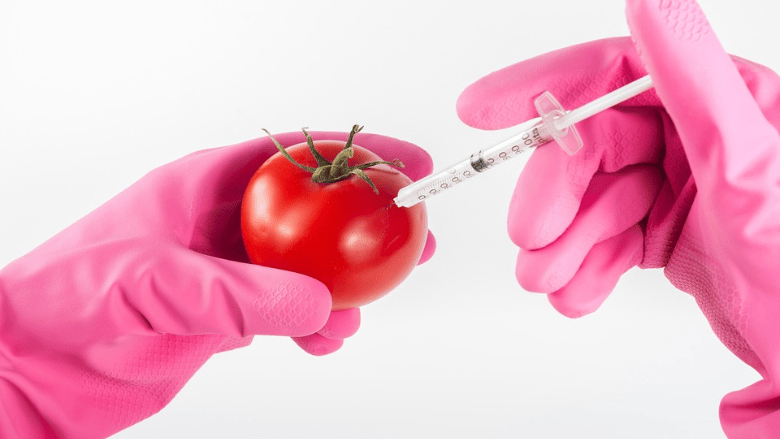
FDA Broaches Safety of Allergen Proteins in Bioengineered Crops

CKE Restaurants Holdings Inc., parent company of Carl's Jr. and Hardee's, has announced the appointment of Max Wetzel as CEO.
The Nelson-Jameson Family of Companies has announced new leadership positions as part of a companywide expansion. Mat Bartkowiak was promoted to Vice President of Corporate Responsibility and Development, Shawn Kitchner was named as Vice President of Operations and Logistics, Kara Lineal was hired as Vice President of Marketing, Kevin Van Ornum was named Vice President of Direct Sales, and Devon Vogel was promoted to Vice President of Customer Solutions.
Lara Ramdin, Ph.D. has joined Upcycled Foods Inc. as its first Chief Science and Innovation Officer.
Specialty ingredient solutions provider Innophos has appointed Tyler Lee as Senior Scientist—Bakery Innovation.
AOAC International has named Pam Coleman as Chief Innovation Officer, a new position at AOAC. Also, AOAC Africa has appointed Winta Sintayehu as its new President.
The Institute of Food Science and Technology (IFST) has elected Sterling Crew as the new President of the organization.
The Council for Agricultural Science and Technology (CAST) appointed Chris Boomsma, Ph.D. as its next Executive Vice President and Chief Executive Officer (EVP/CEO). Kent Schescke, the current EVP/CEO, will retire at the end of August after eight years with CAST.
PPG has appointed Rodolfo Ramirez as General Manager of its Global Packaging Coatings business.
Share-ify has announced the addition of Shannon Shuman to the executive team as Senior Vice President.
Joseph Summers has joined the Kemin Food Technologies—North America business unit as Technical Sales Manager.
FDA Center for Food Safety and Nutrition (CFSAN) Director Susan T. Mayne, Ph.D. stepped down from her position on May 31, 2023.
Tim Jackson, Ph.D. was elected as IAFP President-Elect for 2023–2024 to fill the position due to the resignation of José Emilio Esteban from the IAFP Executive Board. Dr. Jackson officially joined the Executive Board on April 3 and will become IAFP President at the conclusion of IAFP 2023 in July. Also, Dr. Manan Sharma has been elected to the IAFP Executive Board as Secretary.
PSSI has hired Tim Mulhere, a former Ecolab executive, as the company's new CEO.
Separation technology provider Eriez announced the promotion of Gareth Meese to Managing Director of Eriez-Europe.

WETZEL

RAMDIN

LEE

COLEMAN

SINTAYEHU

CREW

BOOMSMA

RAMIREZ
FSSC Releases Updated Version of FSSC 22000 Scheme
On March 31, the FSSC Foundation published Version 6 of the FSSC 22000 scheme to support the consumer goods industry in implementing effective management systems, protecting their brands, and achieving food safety targets. The main reasons for an updated version of the FSSC 22000 scheme are:
- Integrating the requirements of ISO 22003-1:2022
- Strengthening the requirements to support organizations in their contributions to meeting the United Nations Sustainable Development Goals (SDGs)
- Incorporating feedback as a result of the Version 6 development survey.
Version 6 will have a 12-month transition window to allow organizations to prepare for the scheme, and for certification bodies to implement the scheme and gain accreditation. The first audits to employ Version 6 will commence on April 1, 2024, and all organizations must complete the Version 6 upgrade audit before March 31, 2025. One of the most significant changes is the addition of requirements on food loss and waste (FLW). Organizations must have a documented policy and objectives detailing their strategy to reduce FLW within their organization and related supply chains.

The U.S. Department of Agriculture (USDA), the New Jersey Institute of Technology (NJIT), and hydroponic growers Edible Garden have partnered to study the food safety potential of nanobubble technology in controlled environment agriculture (CEA). The project is being funded by the U.S. Environmental Protection Agency (EPA). Nanobubbles are tiny bubbles of gas that are believed to improve plant growth and crop yields in soil-based and hydroponic systems.
Research has demonstrated that employing nanobubbles in lettuce cultivation can substantially decrease the presence of pathogens like Escherichia coli and Salmonella on plant leaves, enhancing food safety and lowering the likelihood of foodborne illness. In addition, the application of nanobubbles can boost the effectiveness of disinfection techniques while simultaneously reducing the quantity of disinfectants required.
Edible Garden Spearheading Research to Further CEA Food Safety

New global guidance from BSI—developed through consensus with industry leaders including Walmart, McDonald's, Kerry Foods, and 3M—aims to assist food businesses and employees in developing a robust food safety culture that will improve product quality, minimize the risks of contamination or recalls, and benefit productivity and talent retention. The guidance document, titled Developing and Sustaining a Mature Food Safety Culture (PAS 320), is designed to guide organizations of all sizes across food, beverage, and retail in creating a culture where people are prioritized and employees embrace food safety, take responsibility for reporting issues, and are empowered to initiate change.
The guidance includes steps for identifying gaps and then implementing a plan for change, and makes recommendations related to:
- Leadership
- An organization's vision, mission, values, and policy
- Organizational structure
- Responsibilities, accountabilities, and authorities
- Guiding coalition team
- Interested parties
- Change champions
- Influencers
- Food safety documentation.

BSI, Food Industry Leaders Develop Culture Guidance
ILSI Europe released a report on analyzing Non-Intentionally Added Substances (NIAS), which are chemicals that are present in a food contact material (FCM) and can migrate into a food product, but were not purposefully added to the food itself during the production process. The document presents background information on different testing conditions for various FCMs and why the standard tests used for plastics outlined in the European Commission Regulation (EU) No 10/2011 (published in January 2011 and covering plastic materials and articles intended to come into contact with food) are inappropriate in some instances for many non-harmonized FCMs.
Additionally, the report gives an overview of the various analytical techniques available, along with their strengths and weaknesses, as no single technique will detect all NIAS or absolutely quantify all of them. Also outlined is the importance of sampling, with "do's" and "don'ts." Finally, the document includes a proposal for communicating along the supply chain, which gains more importance with the stated intention of the European Commission to request details of detected NIAS to be passed to the end user of the article.
Guidance for Non-Intentionally Added Substances
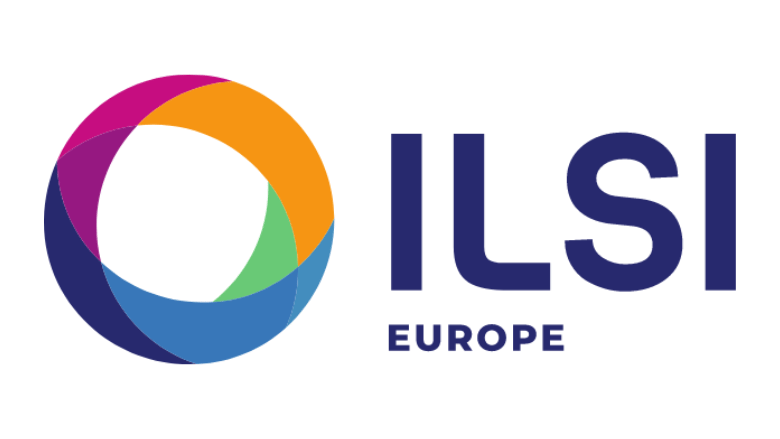

ONLINE & OF NOTE
The Institute of Food Technologists' Global Food Traceability Center (IFT's GFTC) has released 11 new commodity-specific educational videos covering key sections of FDA's Food Traceability Final Rule. IFT's video series is intended to help entities along the food supply chain achieve regulatory compliance with the final rule by the deadline of January 20, 2026. Anyone who manufactures, processes, packs, or holds foods on the FDA's Food Traceability List is responsible for complying with the traceability final rule. These entities must determine what data needs to be collected and when it needs to be collected, as well as which supply chain activities apply to them.
